Alaskan Malamute vs Samoyed – two majestic, snow-loving breeds that often get confused for one another. With their thick coats and friendly expressions, it’s easy to see why. While they share a natural resistance to cold weather and a working-dog heritage, there’s much more that sets them apart.
Whether you’re drawn to the confident, loyal nature of the Alaskan Malamute or the alert, friendly charm of the Samoyed, choosing between the two isn’t just about appearance. The Alaskan Malamute, originally bred for endurance and strength as an Arctic sled dog, is known for its playful personality and plush double coat.
On the other hand, the Samoyed traces its roots to the spitz and laika lines—dogs valued for hunting and guarding in Siberia. Its iconic “Sammy smile” and sociable nature make it a beloved companion.
In this comparison, we’ll break down their differences in temperament, grooming, size, and more to help you decide which is the better fit for your lifestyle.
Alaskan Malamute vs. Samoyed
The Alaskan Malamute and the Samoyed dogs may both hail from icy regions, but their histories tell unique stories. Alaskan Malamutes originated with the native Mahlemut tribe in Alaska and were prized for their strength, stamina, and loyalty. These dogs were essential for hauling heavy sleds, hunting seals, and even deterring polar bears.
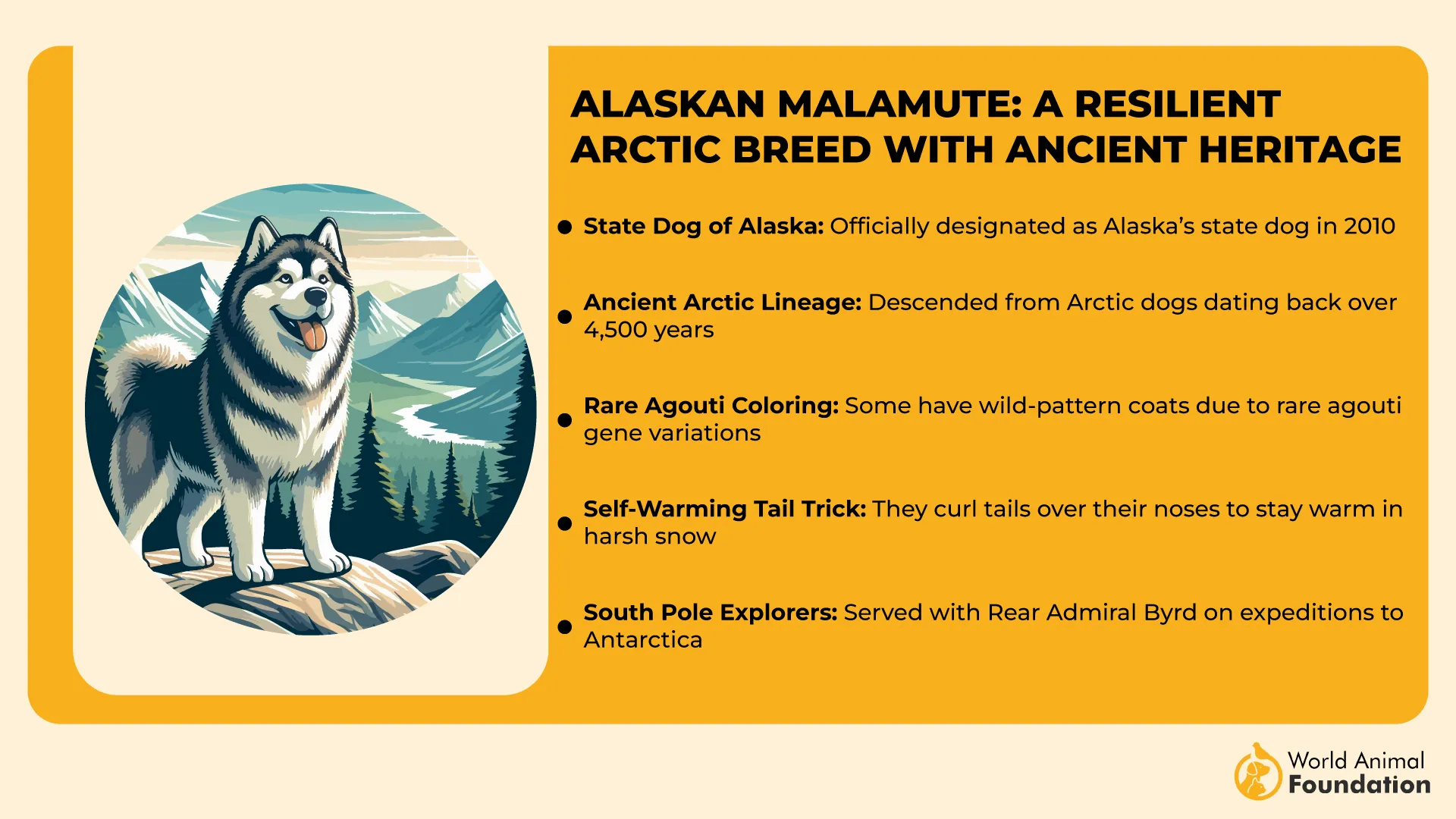
With a powerful build, broad head, and thick double coat in shades of gray or black and white, the Malamute is a large dog, instantly recognizable by the distinct cap or mask marking on its face. Even today, this breed is admired for its energy, intelligence, and hardworking nature.
Samoyeds originate from the Samoyedic people of northwestern Siberia, where they herded reindeer, pulled sleds, and protected livestock. Known for their “Sammy smile,” solid white coats, and friendly nature, they have thick double coats and curled tails suited for freezing climates.

Over time, they shifted from hardworking sled dogs to affectionate companions, gaining popularity in Britain and the U.S. While both breeds thrive in cold weather and enjoy people, Malamutes focus on power and endurance, whereas Samoyeds are gentler and more versatile.
Size and Weight Differences
Alaskan Malamutes are noticeably larger and more powerfully built than Samoyeds. Standing between 23 to 25 inches tall at the shoulder and weighing 75 to 85 pounds, Malamutes are true heavyweights among Arctic breeds. Their broad heads, erect triangular ears, and dense, muscular frame—complete with deep chests and heavy bones—reflect their origin as sled-pulling powerhouses.
In contrast, Samoyeds are medium-sized dogs and lighter on their feet. Male Samoyeds typically stand 21 to 23.5 inches tall and weigh 45 to 65 pounds, while females range from 19 to 21 inches in height and 35 to 50 pounds in weight. Although smaller, Samoyeds still have a sturdy build suited for cold-weather work.
Temperament and Personality Traits
Alaskan Malamutes are affectionate, loyal, and intelligent dogs that thrive on companionship and structure. Bred to work closely with humans, they are happiest when treated as partners rather than pets. However, their size and energy can be overwhelming for small children, and early socialization is key to curbing their high prey drive.
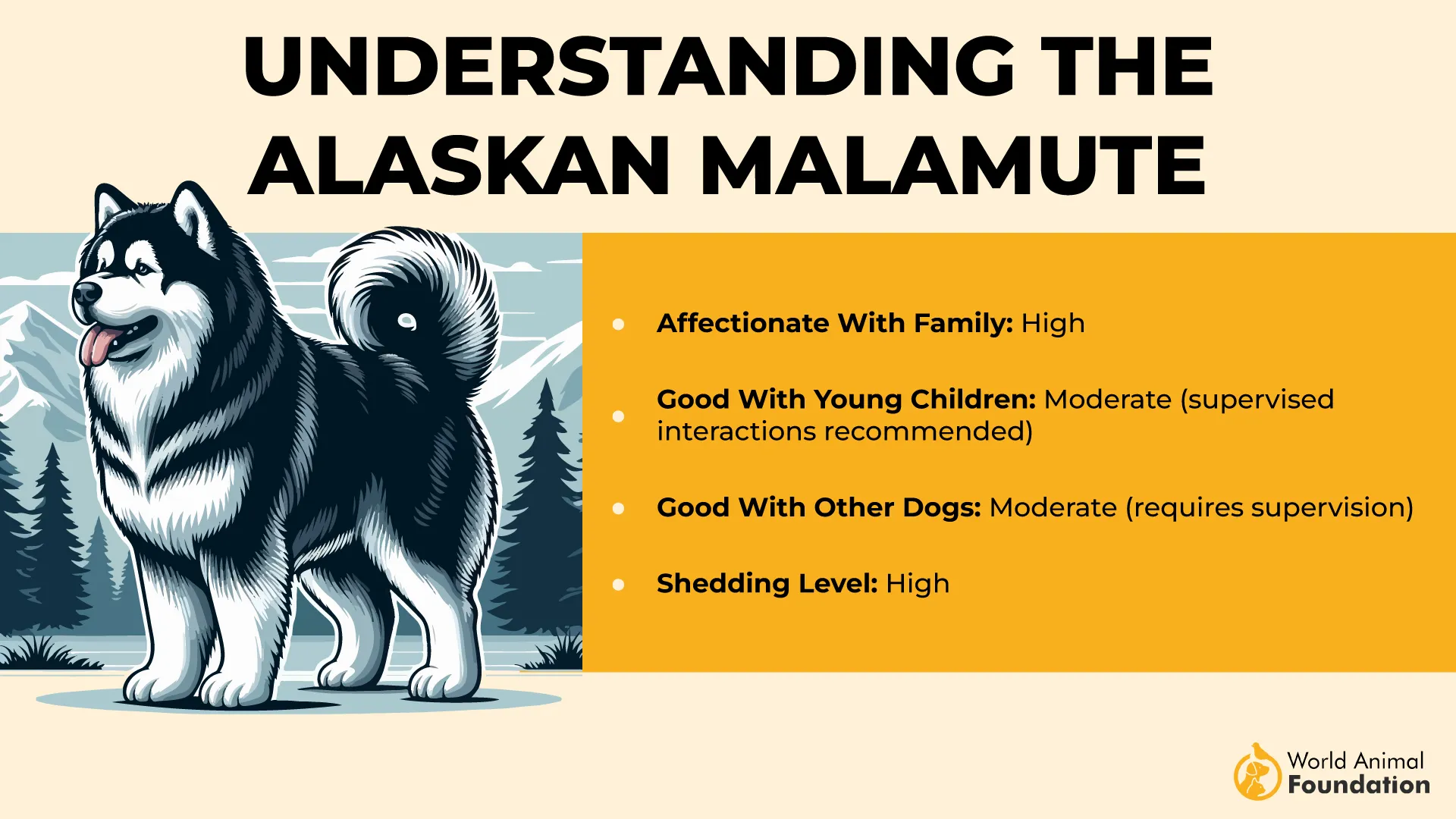
Malamutes require significant daily exercise to stay content—without it, they can become destructive or vocal. Despite their working-dog stamina, they also enjoy lounging with their families once their physical needs are met, making them both active and cuddly companions.
WebMD states that Samoyeds are equally affectionate but lean more toward playful mischief. Their clever and quick-witted nature, rooted in their herding background, makes them engaging but occasionally stubborn. Due to their friendly disposition, Samoyeds make poor guard dogs. Also, with proper socialization, Samoyeds typically get along well with children, other dogs, and even cats.
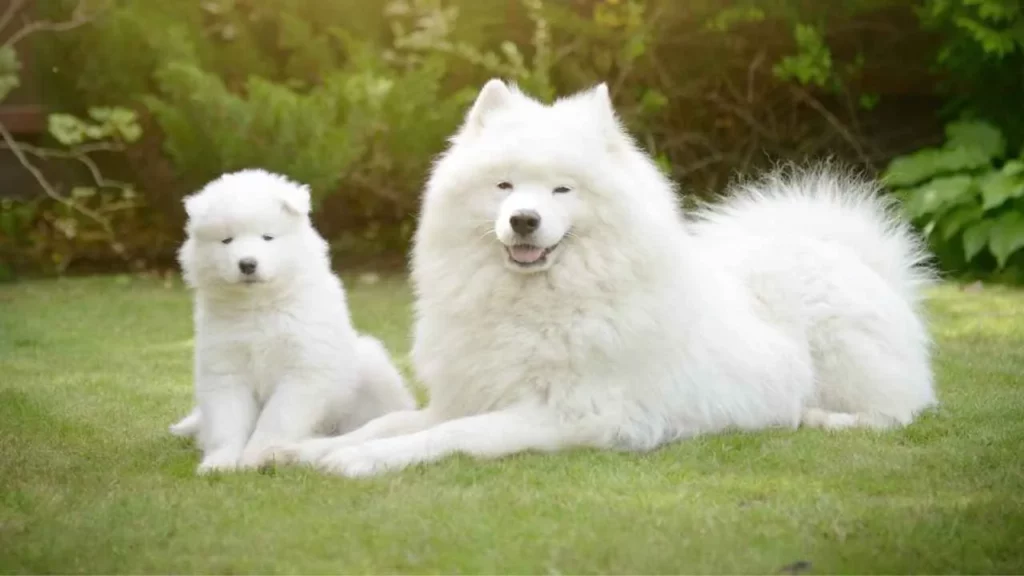
However, they do have a strong instinct to herd and may chase small animals. Like Malamutes, they require plenty of physical and mental activity to prevent boredom-driven behaviors like digging or chewing. Their friendly, outgoing nature makes them ideal family pets, especially for active households.
Trainability and Intelligence
Alaskan Malamutes are intelligent but strong-willed and stubborn, making training challenging for first-time owners. They respond best to consistent, patient leadership, as early socialization and obedience are key to managing their stubbornness and preventing dominance. Some instincts, like digging, are hard to eliminate and require proactive measures such as underground fencing.
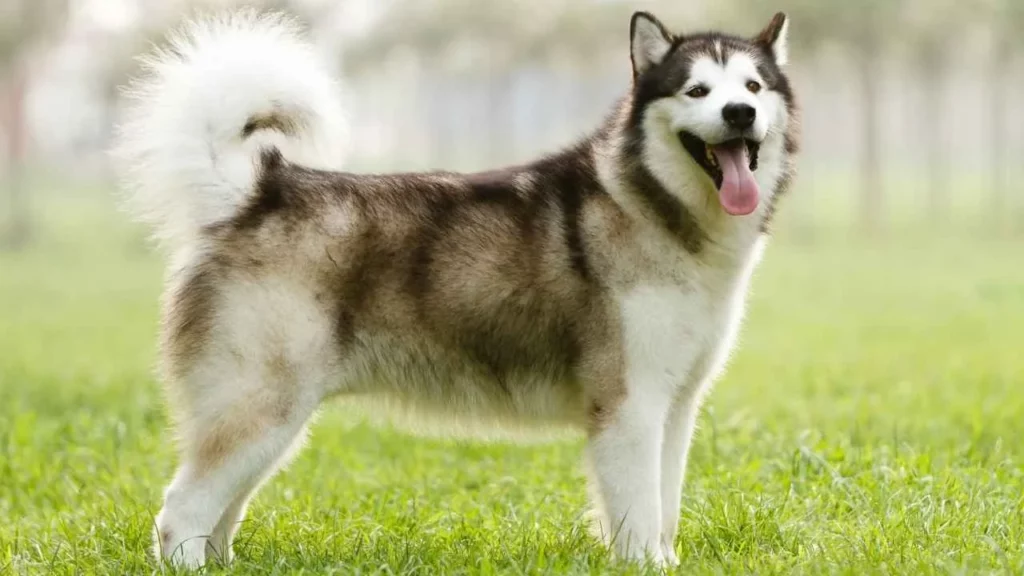
Samoyeds are smart, intelligent, and playful, with a stubborn streak at times. Their close bond with humans makes them eager to please when trained with kindness and consistency. Without enough companionship or stimulation, they can become destructive. An affectionate yet consistent training style keeps them happy and well-behaved.
Energy Levels and Exercise Needs
Alaskan Malamutes are powerful working dogs with high energy levels and a strong need for daily physical activity. Though not bred for speed like racing dogs, Malamutes were developed for endurance and strength, pulling heavy loads over long distances.
As noted by the American Kennel Club (AKC), this energetic breed thrives on activities such as hiking, running, swimming, and even pulling sports like sledding or skijoring. A fenced yard offers a good outlet for play, but without sufficient exercise, a Malamute can quickly become restless and potentially destructive. They also enjoy mentally stimulating tasks like obedience and agility competitions, making them great companions for active owners.
Samoyeds are equally energetic, often requiring even more exercise than other active breeds. These dogs need a minimum of two hours of daily activity, including walks, runs, play sessions, and quality bonding time with their humans.
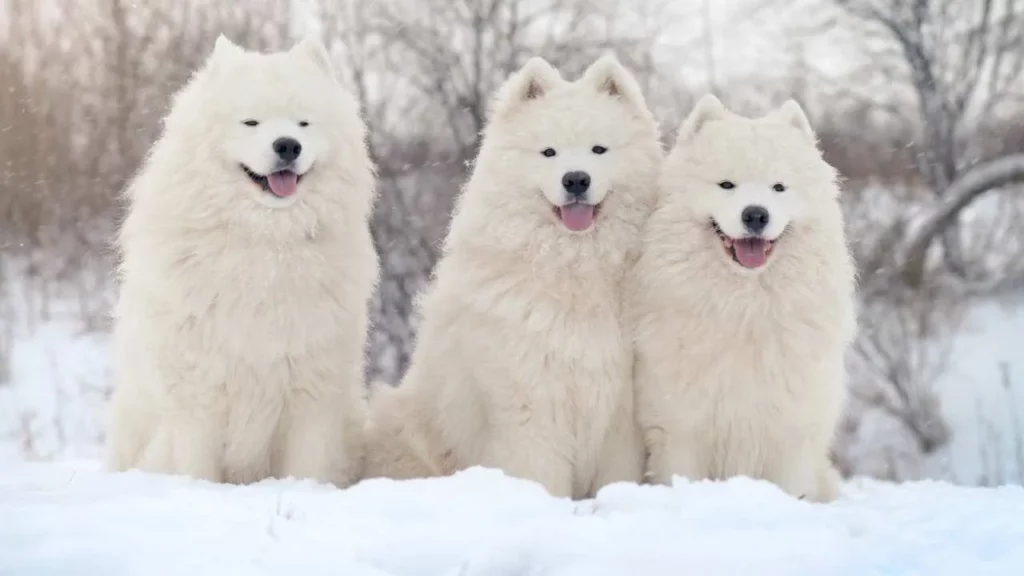
Samoyeds are social and enjoy both physical and mental stimulation, especially when shared with their family or another dog companion. Without proper engagement and attention, a bored Samoyed may develop unwanted behaviors like excessive digging or escaping.
Playfulness and Activity Preferences
Alaskan Malamutes are playful and thrive on interactive, high-energy activities. They enjoy long walks or hikes paired with games that challenge their strength and stamina. Sledding, weight-pulling, agility, obedience, and nose work are especially suited to their working-dog nature.
However, they can be escape artists and aren’t always reliable off-leash, so any outdoor play should be done in a securely fenced area. Their playful spirit shines brightest when they have room to run and tasks that keep them mentally and physically engaged.
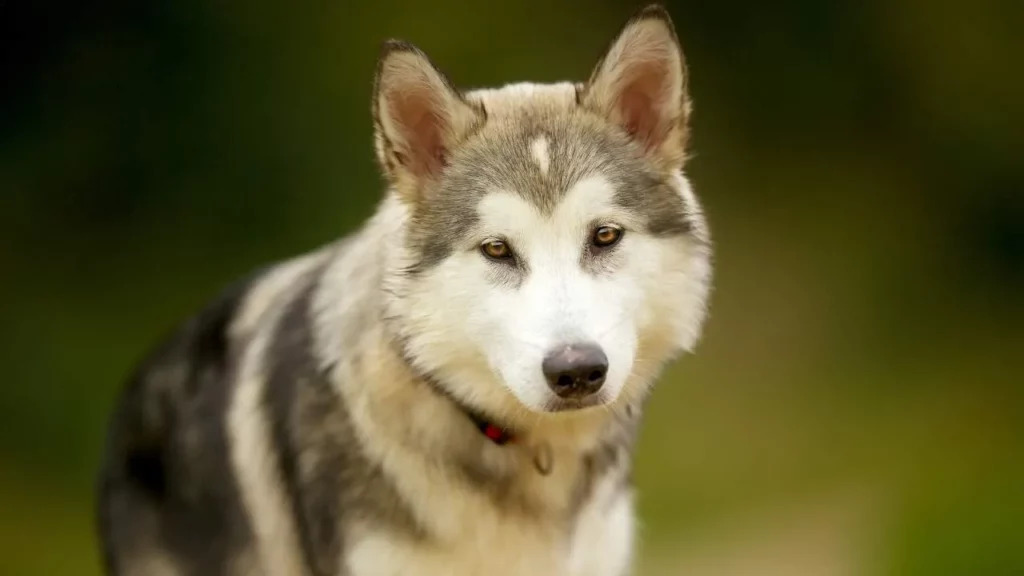
Samoyeds are equally playful and active, with a strong love for running and exploring. Like Malamutes, they benefit from daily walks or hikes paired with energetic games, but they are generally not keen on swimming.
Samoyeds excel in dog sports such as agility, obedience, and nose work, and they also enjoy sledding and weight-pulling activities. Their extremely friendly and lively temperament makes them eager participants in family activities, as long as they’re in a safe, enclosed space to prevent wandering.
Dietary Needs and Weight Management
Alaskan Malamutes need a balanced diet meeting AAFCO standards, fed twice daily for adults and three times for puppies. Free-feeding is discouraged to prevent overeating and obesity. Slow feeder bowls help control their eating pace, and supplements with omega-3s and vitamin C support joint, coat, and eye health, states PetMD.
Samoyeds do best with a structured feeding schedule—twice daily for adults and up to four meals for puppies. Portions depend on their ideal weight (35–65 pounds) and activity level. Active Samoyeds benefit from glucosamine and omega-3 supplements for joint health. Monitoring their weight is key to preventing overfeeding and maintaining vitality.
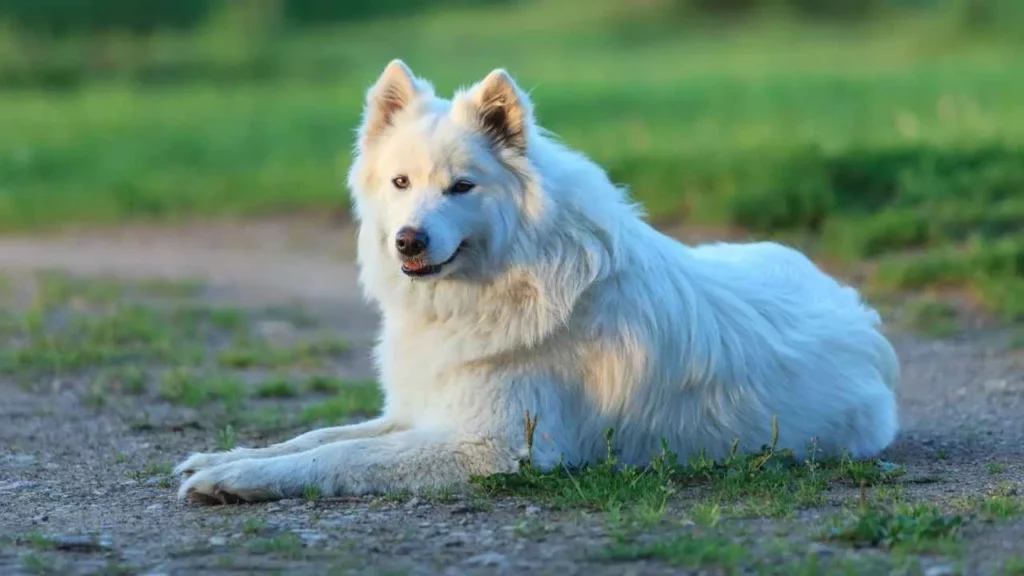
Health Conditions and Lifespan
Generally healthy with an average lifespan of 10–14 years, Alaskan Malamutes are prone to several hereditary and physical conditions that responsible pet owners should watch for:
Hip & Elbow Dysplasia – Joint abnormalities causing pain and arthritis.
Cataracts – Progressive vision loss; may require surgery.
Hypothyroidism – Hormone imbalance leading to weight gain and lethargy.
Chondrodysplasia – Genetic dwarfism causing limb deformities.
Polyneuropathy – A nerve disorder affecting coordination and mobility.
With a typical life span of 12–14 years, Samoyeds can develop eye, heart, and kidney issues, many of which have genetic origins, according to PetMD.
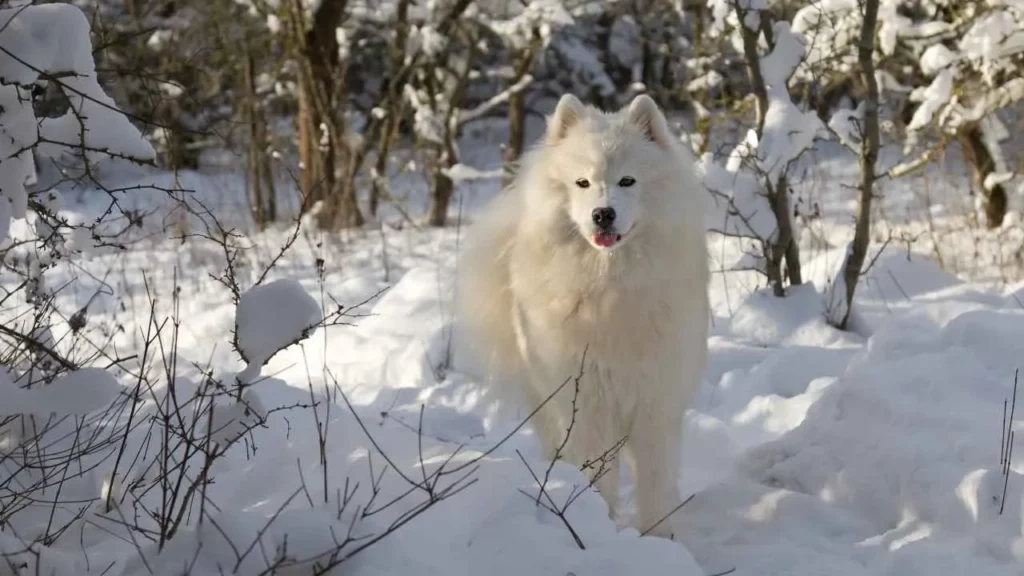
Retinal Dysplasia & PRA – Inherited eye diseases leading to blindness.
Uveodermatologic Syndrome (UDS) – Immune disorder affecting skin and vision.
Heart Conditions – ASD and aortic/pulmonic stenosis may affect heart function.
Hip Dysplasia – Improper joint development leading to pain or arthritis.
Samoyed Hereditary Glomerulopathy (SHG) – Genetic kidney disease leading to failure.
Allergies and Grooming Requirements
Alaskan Malamutes have a thick, waterproof double coat designed for Arctic conditions, which demands regular maintenance to stay healthy. Daily brushing with a pin brush and metal comb is essential to prevent mats and hot spots, which can cause infections. During heavy shedding seasons, usually twice a year, using an undercoat rake helps manage loose fur.
While show Malamutes may be bathed weekly, pet Malamutes typically only need a bath every six to eight weeks, with occasional conditioner if the coat feels dry. Regular nail trimming is also important. Although not highly prone to allergies, their dense coat can sometimes harbor irritants, making routine grooming vital to prevent skin issues.
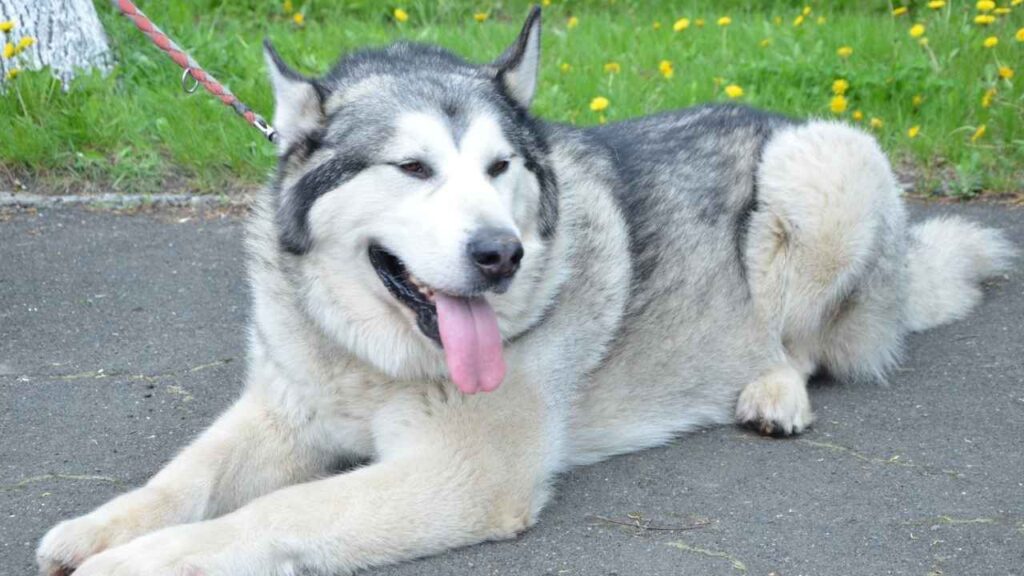
Samoyeds sport a dense double coat consisting of a harsh outer layer and a soft, woolly undercoat that sheds year-round, with heavier shedding once or twice annually. Daily brushing using a slicker brush or metal comb helps control loose hair, dirt, and tangles, keeping their coat clean and healthy. Their nails should be trimmed every three to four weeks or as needed.
Known as the “Teflon dog,” Samoyeds resist dirt and mud, making them one of the cleanest breeds despite their thick fur. While generally healthy, their profuse coat requires consistent grooming to minimize skin irritation and reduce potential allergic reactions, states Britannica.
Conclusion
In conclusion, the Alaskan Malamute and Samoyed are two closely related dog breeds that stand out among the best breeds for cold climates, alongside the Siberian Husky. While all three breeds share high energy levels and a need for proper training, key differences set Malamutes and Samoyeds apart in temperament and care.
Malamutes tend to be more powerful and independent, requiring firm leadership to manage their interactions with kids and strangers. In contrast, Samoyeds are known for their friendly nature but can suffer from separation anxiety if left alone for too long.
Both are larger, snow-loving dogs—not small dogs—and they require lots of exercise and attention to thrive. Understanding these distinctions will help you decide which fluffy companion is the perfect fit for your world.


